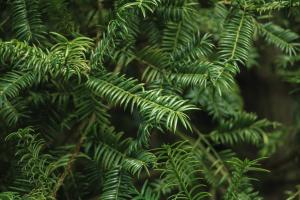Introduction
Mangrove trees are an important part of the coastal ecosystem. These trees are found along the coastal areas of tropical and subtropical regions. The mangrove trees are unique in their ability to thrive in salty environments and stabilize the soil, which helps to protect coastlines.
Carbon Sequestration
The mangrove forests are known to be highly effective at removing carbon dioxide from the atmosphere. The roots of the trees are submerged under water, and they trap carbon in the form of organic matter. As the mangrove trees continue to grow, they continue to sequester carbon dioxide from the atmosphere, which helps to reduce the effects of climate change.
Biodiversity
The mangrove trees provide a habitat for a wide range of fish, birds, and other species. The intricate root system of the trees provides a shelter for a variety of animals, including crustaceans, mollusks, and fish. The mangrove forests are also home to a variety of birds, including pelicans, herons, and egrets.
Flood and Erosion Control
Mangrove trees are highly effective at controlling the influx of water and protecting the coastlines against erosion. The intricate root system of the trees helps to stabilize the soil and prevent flooding. The mangrove trees act as a natural barrier against high tides and storms. This helps to protect coastal communities against the damaging effects of natural disasters.
Economic Benefits
The mangrove trees provide a range of economic benefits to local communities. The trees are a source of food for many coastal communities, and they are used as a source of timber and firewood. Many of the communities that rely on the mangrove forests for their livelihoods engage in sustainable harvesting practices, which helps to promote the conservation of the trees and the ecosystem in which they grow.
Conclusion
The benefits of planting mangrove trees are numerous. These trees play an important role in carbon sequestration, biodiversity, flood and erosion control, and the economy of many coastal communities. As a result, it is important to continue to promote the planting and conservation of these vital trees in order to preserve the health of our planet and the safety of our coastal communities.

 how many times do yo...
how many times do yo... how many planted tre...
how many planted tre... how many pine trees ...
how many pine trees ... how many pecan trees...
how many pecan trees... how many plants comp...
how many plants comp... how many plants can ...
how many plants can ... how many plants and ...
how many plants and ... how many pepper plan...
how many pepper plan...
































